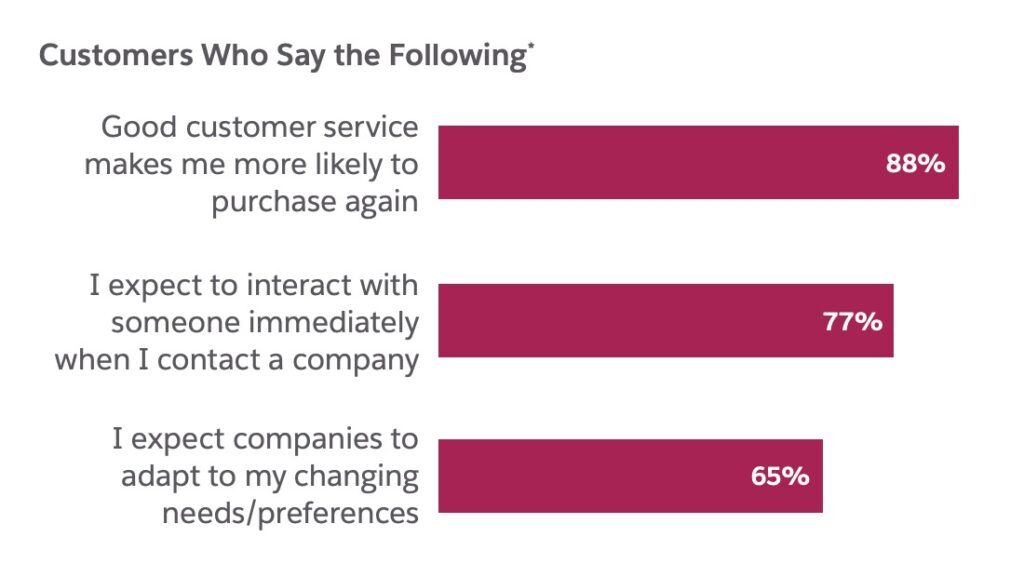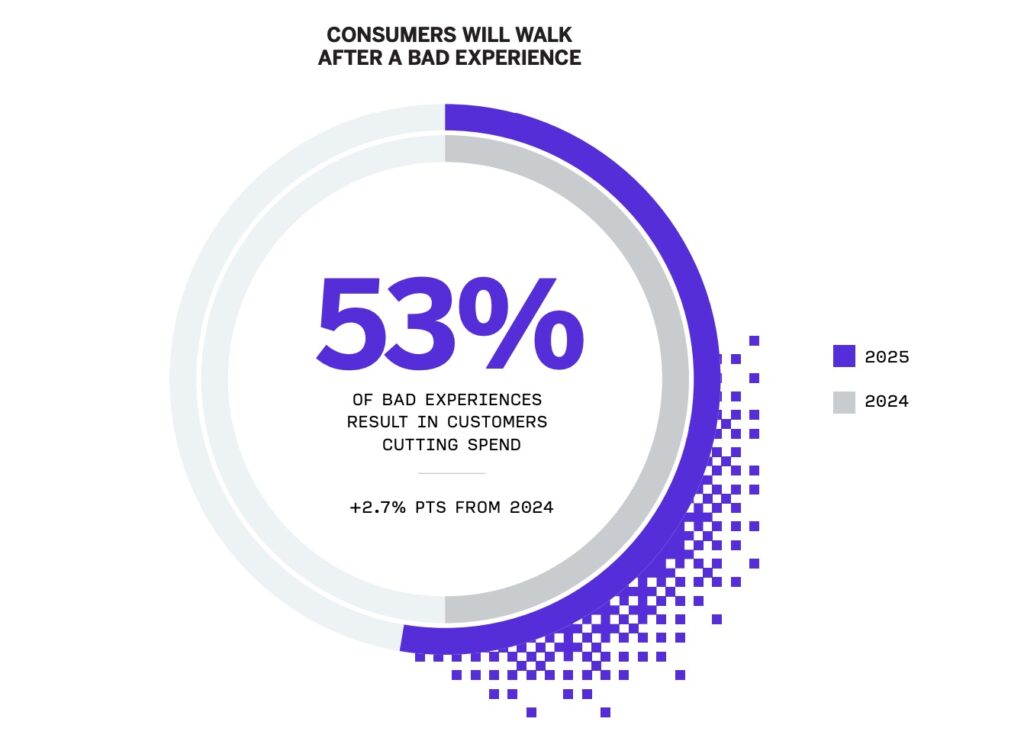It seems obvious that replying promptly to customer emails is good business. Customer expectations are at an all-time high. No one wants to wait around for brands to respond to them when there are competitors offering similar solutions, but with better customer experiences.
That’s why your business needs quick customer replies.
And yet the average response time to a customer email is 12 hours and 10 minutes.
If you don’t want to make the same mistake as most brands are making, you need to ensure your team offers quick customer replies. In this post, you’ll learn exactly how to achieve that.
But first, let’s shed some more light on why your business needs quick customer replies.
Also Read:
Want to understand why your business needs quick customer replies?
Here are some reasons why you should seriously consider improving your email response times to customer queries.
When you don’t respond to customer emails quickly, you effectively push customers into the arms of your competitors. Customers who feel ignored or undervalued will almost certainly take their business elsewhere, often permanently.
By contrast, companies that do respond quickly enjoy far greater customer retention than their less responsive peers.
According to a Salesforce study, customers expect quick and personalized replies, and 88% would purchase from a company again if they get efficient customer service. The impact of quick response on customer satisfaction is clear.

Image via Salesforce
No customer is going to be loyal toward your business if you ignore their emails. If you’re slow to reply, you’re essentially telling customers you don’t care about them. Slow replies kill loyalty and lead to poor customer experiences (see the next point).
Successful companies understand that every customer email is an opportunity to reinforce the brand’s commitment to customers. According to Qualtrics, over 50% of customers will walk away after one bad experience.

Image via Qualtrics
The opposite is equally true—a good experience convinces people to stay and be loyal to your brand.
Quick customer replies improve customer experience with your business, which fosters loyalty.
Slow replies don’t only kill customer loyalty—they are deadly to customer experiences.
Customers today expect fast, efficient replies and the ability for companies to quickly provide answers and resolve issues. Making them wait is like putting a “Closed” sign on your customer experience.
In fact, quick resolution improves customer experience as customers don’t need to wait to get the required assistance.
As per the previously cited Qualtrics report, 45% consumers cite communication problems and 21% cite poor support as the reasons for a bad experience.
That’s why your business needs quick customer replies and prompt support.
When customers don’t have to wait for important information or support, they feel valued and appreciated, leading to higher customer satisfaction scores.
Every business, ultimately, exists to generate revenue. No company can afford to willingly sacrifice revenue due to inefficiency or poor service. And data has shown a direct link between quick replies and revenue growth.
As we’ve already discussed, good and prompt customer service encourages customers to buy again. This, in turn, boosts revenue.
Slow replies are associated with greater churn, poor customer satisfaction, and low levels of retention (see previous points)—all of which are corrosive to revenue growth.
If you’re providing slow responses to customer emails, you’re leaving money on the table. That’s money your competitors are all too happy to take.
Also Read:
The writing’s on the wall for slow customer replies. You simply cannot afford to leave customers hanging for important information or vital support.
But what can you do to improve your team’s email response times? How can you ensure quick customer replies?
Here are a few strategies you can use to deliver quick customer replies to customer emails to your business.
Companies stuck in manual processes waste time and lose business. The most successful customer-facing teams leverage automation for a broad range of uses, including handling repetitive tasks and providing automated, quick responses to routine queries.
Automation tools help companies streamline customer interactions and speed up reply times. Email performance optimization tools with automation capabilities also alert customer support teams when a reply time threshold is breached, ensuring no customer email goes unanswered.
Without email analytics, you’re simply guessing how your customer-facing teams are performing. And considering the dearth of native analytics capabilities in popular email platforms like Outlook and Gmail, companies need to invest in dedicated email analytics tools.
You can use a tool like timetoreply to get real-time data into team email performance, allowing managers to identify bottlenecks and areas for improvement. By adopting a data-driven approach, you can measure and track key metrics such as email response times, first contact resolution rates, and more.
This will allow you to improve the performance and skills of your customer-facing teams, improving the customer experience and building greater customer loyalty.
You can also use timetoreply Extension to equip your customer-facing teams with a way to track response times and ensure quick customer replies.
All the tools in the world won’t help you unless you commit to a culture of customer-centricity. Instilling a customer-first culture motivates teams to deliver exceptional customer experiences and adopt practices that reduce response times.
To build a culture of customer-centricity, companies need to prioritise ongoing training, leadership support, best practices and the effective use of tools that optimise their email performance. Anything less is simply setting you up for failure.
If speed is crucial in customer service, then it’s no surprise that the best customer-facing teams use a range of tools to speed up customer support and response times.
We already mentioned the role that automation and analytics can play in boosting the speed of customer replies, but there’s one more essential tool in the arsenal of every top team: the use of templates.
Templates save time by providing pre-written, customisable, and quick responses for a range of common queries. This ensures consistency while reducing the amount of time it takes to provide customers with the information they need, thus ensuring quick customer replies.
Companies that use templates for frequently asked questions can reduce response times, giving them a significant edge in improving customer satisfaction.
Also Read:
1. Why is it important to respond quickly to customers?
Quick customer replies show your customers that you care. When people get fast answers, they feel valued and are more likely to trust your business. A slow response can frustrate them and send them looking elsewhere.
2. What are the benefits of a fast response?
Responding fast can improve customer satisfaction, increase sales, and help you solve issues before they grow. It also builds loyalty and gives your business a strong, professional image.
3. What is the average response time for customer emails?
The average response time for customer emails is 12 hours and 10 minutes, per a recent study. However, the average time may differ by industry, so it could be different for the software industry as compared to the retail industry.
For your business, you should strive to provide quick customer replies and try to respond within an hour for urgent queries.
4. How can I boost my team’s email response times?
Start by setting clear response goals, using templates for common questions, using automation, and creating a customer-first culture. Tools that track and alert you about slow replies can also make a big difference.
5. How can timetoreply help you deliver quick customer replies to emails?
A tool like timetoreply can track how fast your team responds to emails and show you where delays happen. It gives real-time reports, alerts for overdue messages, and helps you deliver efficient customer service and ensure quick customer replies.
If you’re serious about quick customer replies and happier customers, timetoreply is a great tool to invest in for your business.
Quick responses to customer emails can make a big difference in how existing and potential customers see your business.
Quick customer replies help you build trust, solve problems faster, and create a better overall experience.
Improving response times doesn’t have to be complicated. With the right strategies, your sales and customer support teams can stay on top of every message.
It doesn’t just help improve customer satisfaction, but it can also help your company win over potential customers with quick responses.
If you’re looking for a simple way to track and boost your email response speed, timetoreply can help your support and sales teams stay responsive.
Get live inbox alerts and reply quickly to customer emails with timetoreply